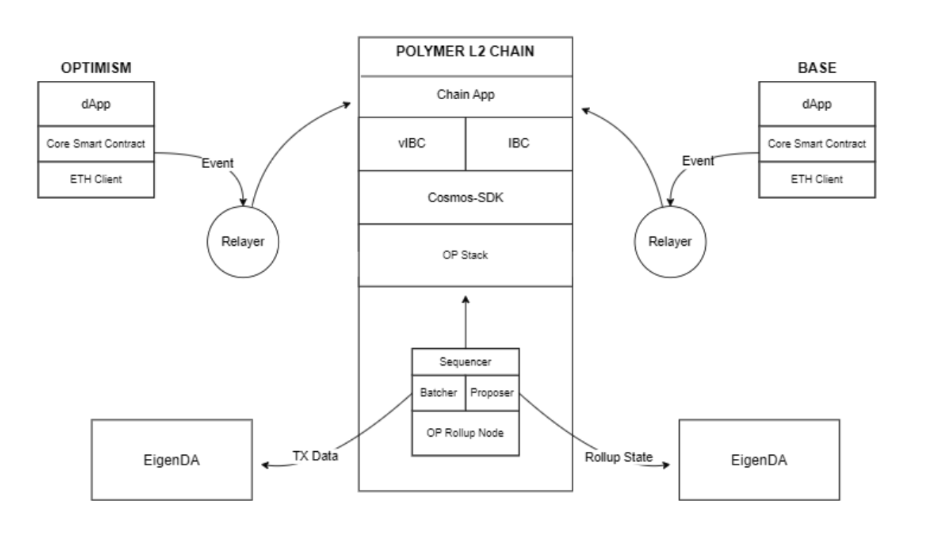Security vs latency trade-off
Consider the following diagram to study the architecture of Polymer, the interoperability hub connecting Ethereum rollups.

In the previous section, all the different components making up the Polymer chain were explained. But how does this translate when we send a packet? (This assumes that clients, connections and channels have been created.)
Generally speaking, the packet lifecycle is exactly as described in the dedicated section on vIBC. However, there's an important thing to remember when considering Polymer as Ethereum's interoperability hub:
As a rollup that settles onto Ethereum itself, Polymer has the advantage when connecting Ethereum rollups that we don't have any additional trust assumptions on a validator set or guardian set etc. but instead Polymer shares security with the rollups from the Ethereum stakers.
In this section we will consider what this means for the clients we use and the security models as well as latency considerations.
Security
Work in progress, will follow soon.
Latency
Work in progress, will follow soon.